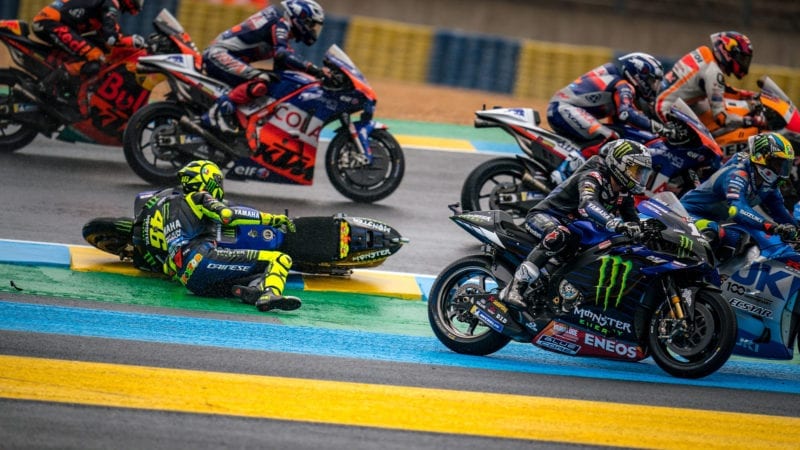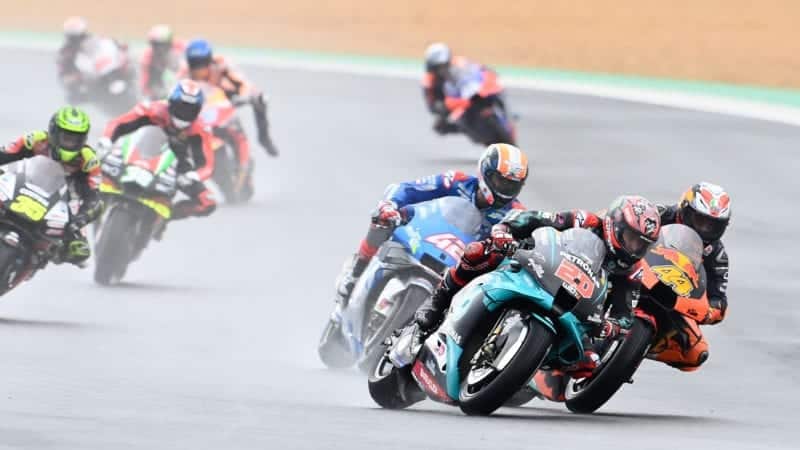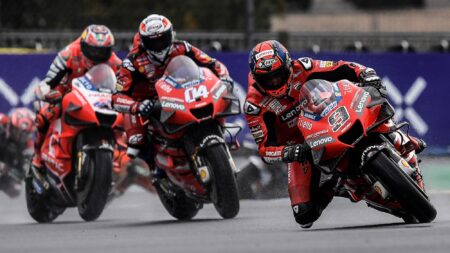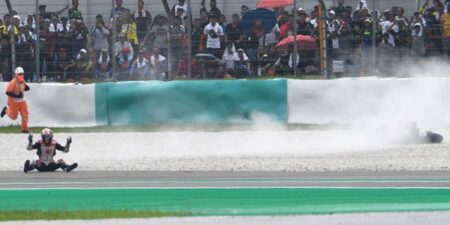“Some people said nobody wants to win this championship, but everybody wants to win it!” said Quartararo, who had perhaps his scariest moment during the slowdown lap.
“When I looked at the big screen I saw a red guy on the screen, so I said, ‘Dovi won today, so he’s getting way closer,’ but then I looked again and it was Petrucci, so I said, ‘Oh, this is good!’. Then I looked at second place; it was Alex [Márquez] and third was Pol [Espargaro]. I was angry but happy because our first race in the wet could have been worse and we are still leading the championship. We can say that this is a really a strange year!”
Mir’s problems in the dry were significant, because this was the third year in a row that Suzuki struggled at Le Mans. Last year Rins arrived at the track standing second in the championship, one point behind Marquez, a genuine title contender. But he couldn’t get heat into his front tyre at Le Mans, so he struggled to tenth place and left France 20 points down
Rookie Mir had an even worse time at Le Mans 2019. He crashed twice on Friday and Saturday and three times on Sunday before the race had even started (two in morning warm-up, one on the warm-up lap) and of all of those crashes were at the same corner. You guessed it – Turn Three – where he fell again last Saturday morning and where Rins crashed out of the race.
Suzuki engineers don’t understand why their riders can’t get heat into the front tyre at Le Mans, so perhaps it’s the asphalt.
Le Mans is a MotoGP accident black spot – why?
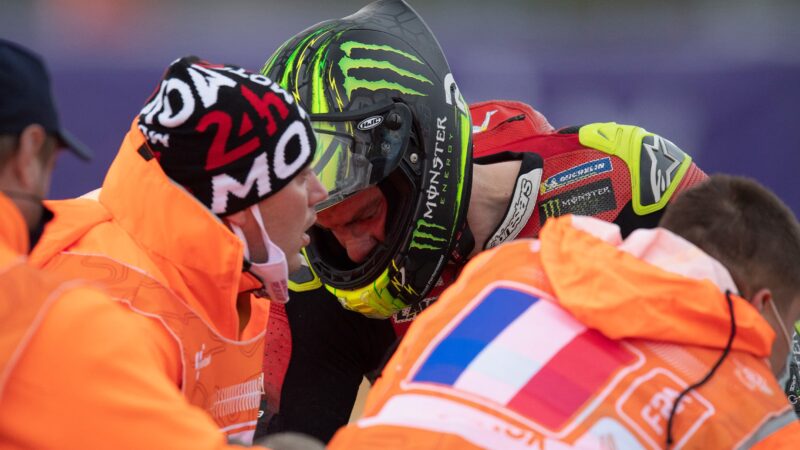
Cal Crutchlow and some busy Le Mans marshals after his race crash
Mirco Lazzari gp/Getty Images
Le Mans has always been a weekend where riders get battered and bruised, while mechanics spin spanners to fix the damage.
The French track has topped the MotoGP crash league no less than four times in the last 11 years, which is significant when there are 18 or 19 circuits in the championship.
There are a few reasons for this. Firstly, the layout is tight and unforgiving. In the old days Le Mans would’ve been called a scratcher’s circuit, the kind of place where riders who are prepared to take maximum risks can make the difference. Which means at MotoGP level everyone is on the edge, all of the time.
Second, the weather is often bad, with most Le Mans weekends affected by rain and some point. Third, the asphalt. Most riders say it’s very grippy, but with a thin line between grip and no grip, so riders get little warning of impending disaster.
Heading towards Turn Three on a chilly day is purgatory for riders, because they simply don’t know if the front tyre will be hot enough to grip
Last weekend at Le Mans there were 100 crashes, last year there were 90 and in 2018 there were 109, an all-time record for a fully dry weekend.
Both riders and engineers had their theories about how a grippy track could cause so many accidents in the dry.
“The Michelin rear has so much grip that we try to run not so much traction control in the lower rpm range, to get the bike to pivot,” explained Bradley Smith, a KTM rider at the time. “We try to get the pivot naturally and we are all trying to get the bike turned as quick as possible to get up the straights, so the problem is exaggerated here.”
KTM engineer Paul Trevathan had another theory. “There are a lot of corners here where riders are using low rpm here and when the rpm is low the guys can’t feel the rear step out so much,” he said. “When it’s high rpm the rear is more connected to the throttle. There’s good grip here, so the guys feel they can carry good corner speed, but the rpm is so low they don’t feel the tyre go so early in corner.”
In fact front tyre grip is usually the biggest issue at Le Mans, especially into left-handers, because the layout is quite asymmetric, with nine rights and only five lefts. Last year 32 of the 90 crashes were riders losing the front into the track’s first left-hander, making Turn Three the most crashed-at corner of the year.
Last weekend 30 of the 100 accidents were at Turn Three. This isn’t a Michelin or a Dunlop problem. Years back, on a chilly Saturday morning during the Bridgestone spec-tyre era, I watched FP3 from Turn Three and watched the marshals pile up the wrecked bikes against the circuit wall.
